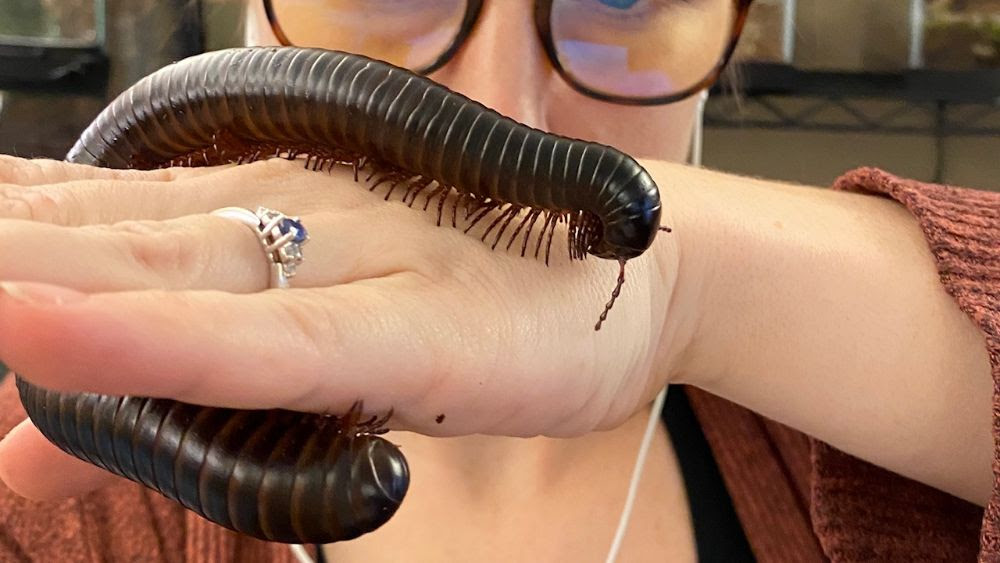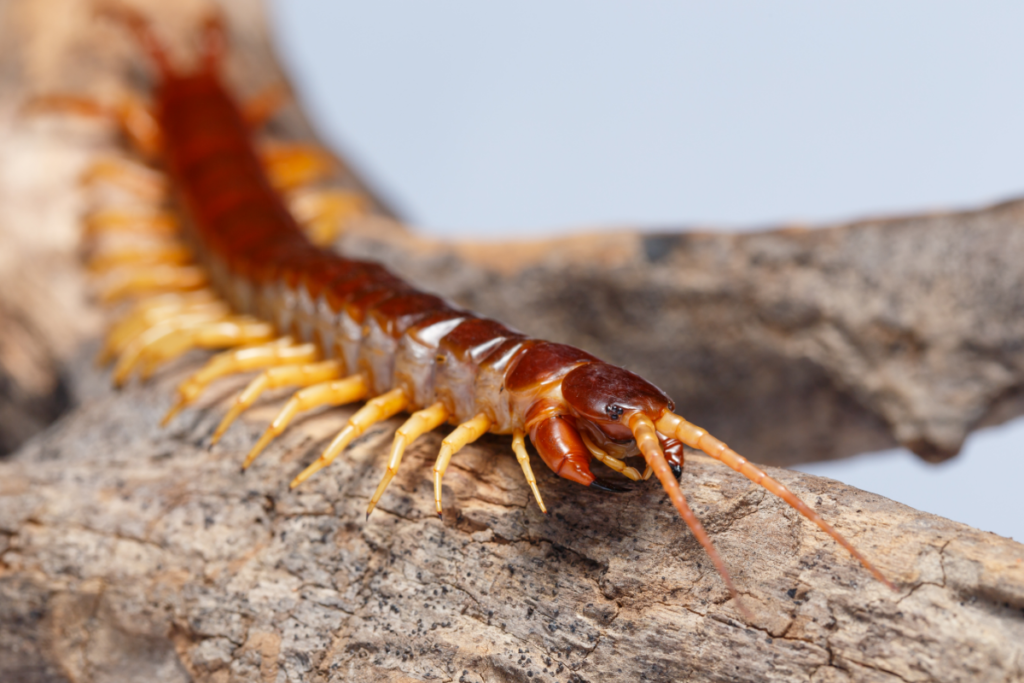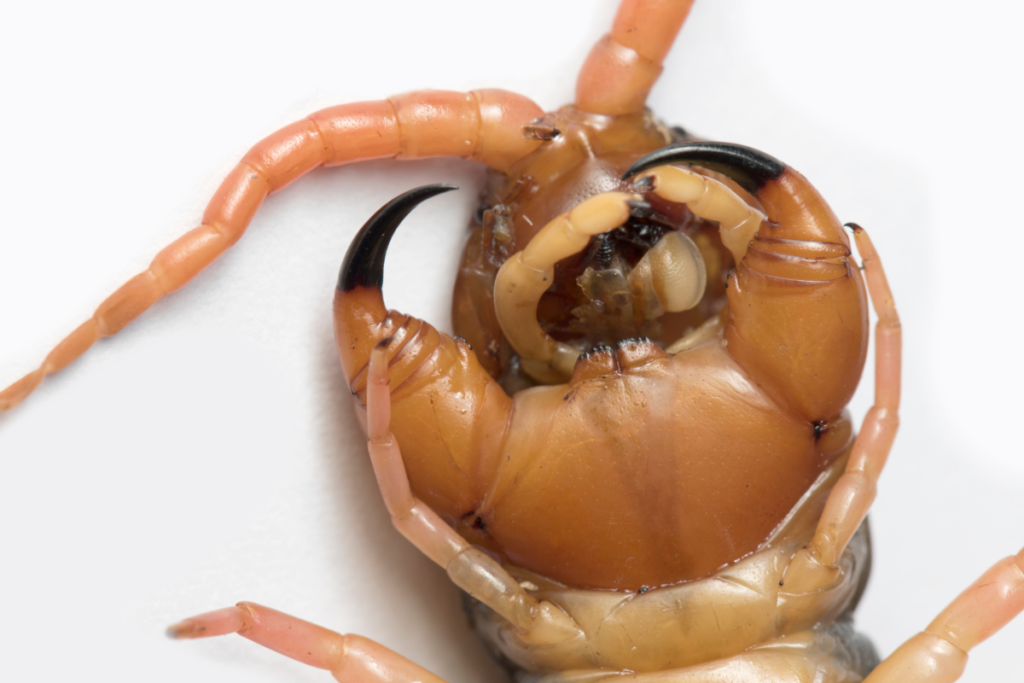Welcome back to the Lab!
They’ve got a lot of legs, but when it comes to millipedes and centipedes, that’s pretty much where the similarities end. They may look alike or at least closely related, but the fact is, these two animals diverged over 400 million years ago in the Silurian period and are very, very distant cousins.

You may already be familiar with Milton, our Giant African Millipede. Milton was on exhibit for several years at our Front Street location. Milton, like all millipedes, belongs to the class Diplopoda. One of the first noticeable differences between millipedes and centipedes is the number of legs. The number is not universal for either class of animal (for example, Milton will not have the same number of legs as our Florida Ivory millipedes), but millipedes have two pairs of legs per body segment, while centipedes have just one.
The second most noticeable difference is the body shape. Millipedes are expert tunnelers; their rounded body shape and slow movement allows them to burrow with ease. Centipedes are more flattened, and built for speed.
The third biggest difference, while not immediately evident to a casual observer, is their diet. Milton is a gentle detritivore, grazing on decaying organic materials (though at MBHI he gets fresh fruits and veggies), which is why I feel comfortable holding him in my hand (pictured above). He has a pair of mandibles, but even if he decides to have a nibble, they aren’t strong enough to puncture skin. There’s no need for a set of powerful jaws when most of what you’re eating is soft and mushy and… decaying.

Centipedes, on the other hand, are fast and agile predators belonging to the class Chilopoda, and some species are known for their ability to inflict a tremendous amount of pain in humans. Their first pair of legs have been modified into a set of pincers (called forcipules) that they use to catch their prey and inject them with venom; from the underside, they look to me like a pair of muscle-y bodybuilder arms. Like other venom-producing arthropods (spiders, scorpions, etc.) the potency of their venom is variable between species, but despite this, they are all exceptional hunters.

Until next time, thanks for visiting the lab!
Bug Wrangler Brenna
brenna@missoulabutterflyhouse.org
Want to revisit a previous Notes from the Lab issue? Check out our archive! Do you want to request a subject for an upcoming issue? Email me at the address above and put “Notes from the Lab” in the subject line.